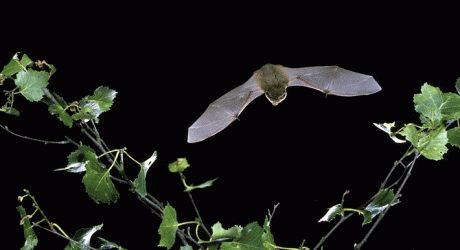NEW research from the University of Stirling indicates that small wind turbines, which are becoming an increasingly popular means of power generation for homeowners, can halve bat activity in their immediate vicinity.
The research, to be published in the American journal PLoS ONE, was conducted by Dr Jeroen Minderman from the University’s School of Natural Sciences*. It is the first study of its kind to examine the impact of small wind ‘microturbines’ on wildlife activity and concludes that bats’ use of habitats may be reduced by their operation.
Dr Minderman said: “Previous studies have shown that birds and bats can be killed by colliding with large turbine blades or that wildlife may avoid the surrounding environment, leading to effective habitat loss. To date, studies have focused solely on large-scale wind farms. We therefore felt it vital to address this knowledge gap by determining whether such effects are also applicable to small wind turbines, to improve planning guidance and deter badly-sited turbines in the future. This is particularly important given the recent boom in their usage.”
The Stirling team’s research, funded by the Leverhulme Trust, involved halting microturbine movement at 20 sites across the UK and examining the effect on bird and bat activity.
The results revealed bird activity was not significantly affected but bat activity was 54 per cent lower in close proximity to operating turbines compared to those which were stopped. Whilst this effect diminished at increasing distance from the turbines, the findings highlight that this habitat loss may have undesirable consequences for bats if availability of suitable alternative habitat nearby is already limited.
Dr Kirsty Park, senior lecturer in Ecology at Stirling who led the research team, said: “Reducing our carbon footprint is important, but we also need to understand the implications of renewable energy technologies for wildlife conservation. Current planning guidance on the siting and installation of new small wind turbines is very limited so our findings will provide valuable information and help create more sensible and useful guidelines.
“Based on our results, we recommend that turbines are sited at least 20 metres away from potentially valuable bat habitat. This will help us to maximise the benefits of renewable energy generation whilst minimising potentially adverse effects on wildlife.”
She added: “This study focused mainly on just two bat species**. Further research is needed to understand the impact of microturbines on other species and the role landscapes surrounding turbines may play.”
Said a spokesperson: “Microturbines are much smaller than their large wind farm counterparts and used mainly in domestic and farmland settings. Normally, they are installed individually and can make a substantial contribution to household energy needs. The increase in installation of such turbines is due to rapid technological developments and the introduction of financial incentives in the form of feed-in tariffs: schemes which pay people for creating their own ‘green’ electricity and offer additional bonuses for exporting electricity into the grid.”
Ends
For further information contact:
Dr Jeroen Minderman on 0191 2226898 or email jeroen.minderman@newcastle.ac.uk
Dr Kirsty Park on 01786 467799 or email k.j.park@stir.ac.uk
Karen McIntosh, Public Relations Officer, on 01786 467058 or k.l.mcintosh@stir.ac.uk
Notes for editors
* Researcher, Dr Jeroen Minderman, is now based at the School of Biology at Newcastle University.
** The results of the study are largely relevant to two bat species: the common and soprano pipistrelle.
Other contributors: Dr Kirsty Park (University of Stirling), Dr Chris Pendlebury (University of Stirling), and Dr James Pearce-Higgins (British Trust for Ornithology).
Photographs:
Picture – Common pipistrelle, credit Hugh Clark/Bat Conservation Trust
The journal homepage can be accessed here.
After publication, the paper will be available online here.
This research was funded by The Leverhulme Trust, one of the largest all-subject providers of research funding in the UK. For further information about the schemes that the Leverhulme Trust fund, visit their website here or twitter feed here.
MEDIA RELEASE posted by the University of Stirling. You too can post media releases on www.allmediascotland. For more information, email here. And do feel free to follow www.twitter.com/allEducationPR.
Contact: Karen McIntosh
Email: k.l.mcintosh@stir.ac.uk
Website: http://www.stir.ac.uk






